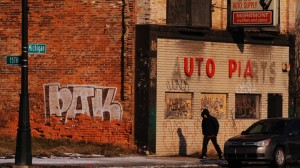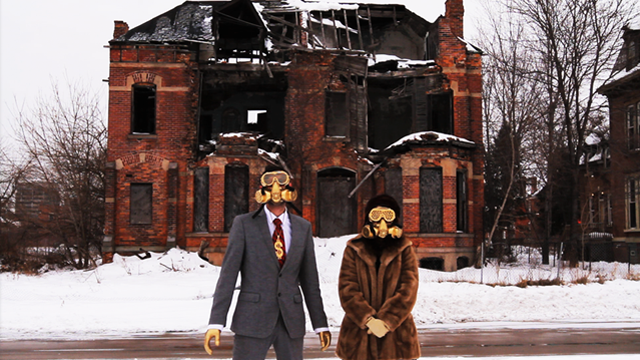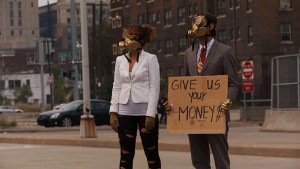Detroit, once the nation’s fastest-growing city, is now the largest city to file bankruptcy in the history of the U.S. As reported in The New York Times, Detroit may receive 300 million in federal aid, which is not the same as a bailout and not nearly enough to pull the city out from under the heavy anvil of bankruptcy.
If you’ve seen the 2012 documentary Detropia, then you have a pretty good idea what the city of Detroit is up against. If you haven’t, the film provides a powerful and heartbreaking look at what can happen when the proverbial American dream dies.
A voice-over at one point in the film succinctly states: “We've moved to a have and have-not society. He who controls the gold runs the show." While that may have always been the case, perhaps it has never before been so deeply felt.
 Filmmakers Heidi Ewing and Rachel Grady are the co-directors who also brought us the award-winning films Jesus Camp and The Boys of Baraka, among others. Whereas I find that so many documentaries leave me wanting in some way, Detropia felt like an even mix of good journalism and art. The documentary expertly juxtaposes the long and near past and captures Detroit right at the brink, still a good while before filing Chapter 9 -- perhaps even before city officials knew it would come to that. It also covers a lot of ground. We meet several Detroit-for-lifers that include a union president, small business owner and local video blogger and they take us to empty factories, through abandoned buildings, past homes that are burned and gutted and waiting to be demolished. We see men pulling scrap metal. We compare the Chevy Volt and its Chinese competition. We sit in on a union meeting, a city planning meeting, and then later on a front porch, listening to the local responses. Then there is the young hipster artist who buys a loft for cheap, a space that would make most of us SFers drool.
Filmmakers Heidi Ewing and Rachel Grady are the co-directors who also brought us the award-winning films Jesus Camp and The Boys of Baraka, among others. Whereas I find that so many documentaries leave me wanting in some way, Detropia felt like an even mix of good journalism and art. The documentary expertly juxtaposes the long and near past and captures Detroit right at the brink, still a good while before filing Chapter 9 -- perhaps even before city officials knew it would come to that. It also covers a lot of ground. We meet several Detroit-for-lifers that include a union president, small business owner and local video blogger and they take us to empty factories, through abandoned buildings, past homes that are burned and gutted and waiting to be demolished. We see men pulling scrap metal. We compare the Chevy Volt and its Chinese competition. We sit in on a union meeting, a city planning meeting, and then later on a front porch, listening to the local responses. Then there is the young hipster artist who buys a loft for cheap, a space that would make most of us SFers drool.



